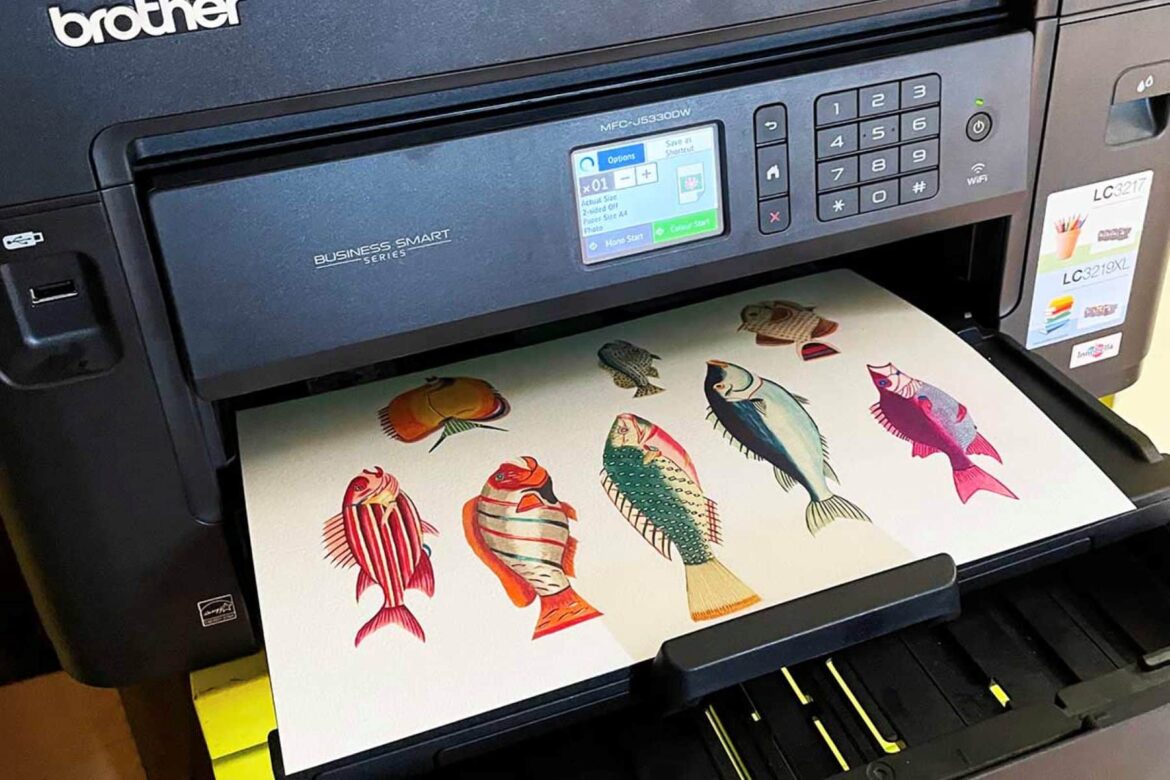938
To print a Word/PDF document from DIN A4 to DIN A5, you usually only need to take a few steps.
Printing: From DIN A4 to DIN A5
In this example, we are using Word 2010, but the procedure is similar for most programs, regardless of whether you want to print a spreadsheet in DIN A5 format or a PDF.
- First, click on “File” ☻ “Print” as usual.
- In the ‘Print’ menu, select “Settings.”
- In the “Settings” menu, you will find a pull-down menu in Word, third from the bottom, where A4 is usually selected. Simply select the DIN A5 format instead of the DIN A4 format.
- To print PDF files in Adobe Reader, go to “Print” ☻ “Page Setup” ☻ “A5.”
- Alternatively, with many more expensive printers, you can also set the print format directly on the printer.
Step-by-step instructions
Basically, printing DIN A4 documents on DIN A5 works by changing the paper format to DIN A5 in the print settings. You can either change the document to A5 in the program settings or adjust the page size when printing.
- Window: Open the document and go to File ☻ Print. Click on Settings or Properties in the print dialog. Under Paper Size, select the DIN A5 (148 x 210 mm) format. Start the printing process.
- Example for Microsoft Word: File menu ☻ Print. Select A5 in the print settings under Page Size. Ensure that the printer is also set to A5 paper. Start printing.
- macOS (English): Set the paper size to A5 in the print dialog. Programs such as LibreOffice or Adobe Acrobat Reader usually support this function via the print dialog, where you follow the same steps as in Windows.
- Linux (English): In LibreOffice, set the document to A5 via Format ☻ Page ☻ Paper Size A5. Then set the paper size to A5 in the print dialog box. Adobe Reader and other printing programs offer similar options.
- Here are some examples in programs:
- Microsoft Word (Windows & macOS): Open the A4 document. Go to Layout ☻ Size ☻ A5 (if you want to permanently adjust the document). Alternatively, select A5 in the print settings in the File ☻ Print menu. Start printing.
- LibreOffice Writer (Windows/Linux/macOS): Menu Format ☻ Page. Change the paper size to A5 and confirm with OK. Set A5 as the paper size in the printer via File ☻ Print. Start printing.
- Adobe Acrobat Reader (Windows/macOS/Linux): Open the PDF. Go to File ☻ Print. In the print dialog, click on Page Setup and select A5 as the paper size. Optional: under “Customize” or “Scaling,” set “Fit to page size.” Start printing.
- Here are some specific examples:
- In Word, you can also print multiple A5 pages on one A4 sheet, e.g., 2 pages per sheet, to get two A5 pages on one A4 sheet, which allows for cropping after printing.
- In LibreOffice, there is a “Pages per sheet” function in the print dialog, which allows you to print 2 A5 pages on one A4 page, for example.
- PDF printers on Windows also allow you to create a PDF in A5 format by printing an A4 PDF and selecting A5 in the virtual PDF printer.
- These steps are relatively easy to perform in practice and work very well for the common operating systems Windows, macOS, and Linux, as well as well-known programs such as Microsoft Word, LibreOffice, and Adobe Acrobat Reader.
Practical tips
When printing brochures on both sides, the choice of printer driver settings and the correct paper feed are crucial for achieving a professional result.
- Printer driver settings: Check whether the printer supports the automatic duplex function (“print on both sides”); activate this option in the print dialog. In the driver, select the “Brochure printing” or “Multiple pages per sheet” option so that two pages are placed correctly next to each other on one sheet.
- Note the binding direction: Mirror the sheet on the long or short side, depending on how you want the brochure to open. For typical brochures in portrait format, binding is usually done on the long edge. If there is no automatic duplex function: Select “Manual double-sided printing,” first print only the odd pages, turn the sheets over, and then print the even pages.
- Correct paper insertion: By default, insert the sheets in the orientation specified in the print dialog (usually with the printed side facing down, top side first). Turn carefully when using manual duplex. It is best to mark the sheets so that you do not confuse the top and bottom when turning them over. Ideally, use paper with a weight of at least 80 g/m², as thin paper can warp during the second print run or the ink can bleed through to the back. Before mass printing, start a test print to check the orientation and page order.
- Use a PDF instead of a Word document as your print template. This prevents unwanted layout shifts and ensures consistent results. Always install the latest printer drivers to take advantage of modern options such as brochure printing and easy duplex selection.
- If you are unsure about paper placement and feeding, simply refer to the printer manual or read the printer driver’s on-screen instructions—many models provide insertion instructions in the printer menu. Add page numbers and, if necessary, fold marks to the document; this is particularly helpful for larger brochures.

